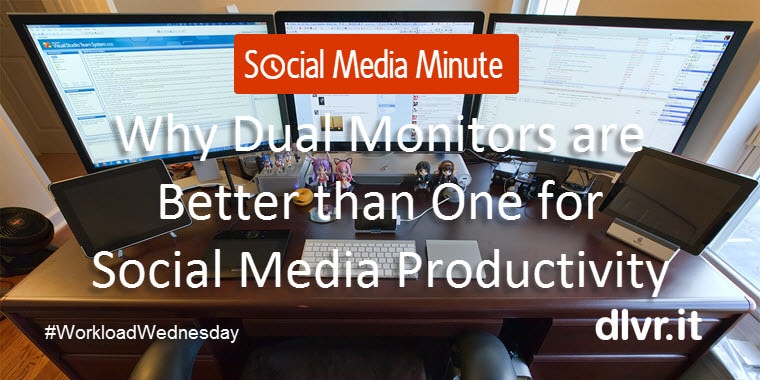Why Doing Less is Good for You: 21 Ideas to Hack Break Time at Work
What leads to more productivity – Multitasking? A packed schedule? Being busy? Here’s a thought: How about taking a break? As counter-intuitive as that sounds, every self-help program…
Hardcore Productivity Hack: The Best Time to Drink Coffee to Boost Performance
After turning off the alarm, is the next thing you reach for is your first cup of coffee? Do you really need this early-morning jolt of caffeine? Did you know…
Quick Cure for Writer’s Block: 3 Questions to Ask Yourself to Unlock the Block
Drawing a blank on blog content? With the help of a post found on Quora, here are three quick questions to ask yourself about what your audience wants…
5 Easy To-Do 4th of July Social Media Ideas
As a small business, holidays are a fun time to engage with your customers, fans, and followers through social media. Fourth of July is no exception, and it’s…
How to be Smart with Social Media Auto Posting – Best Practices
What exactly is social media auto posting and when is/(is not) a good time to use it? In its simplest form, social media auto posting happens with the help…
What Dad is Afraid to Admit He Really Wants for Father’s Day
Just in time for the third Sunday in June (every year) – perfect Father’s Day gifts he will actually want! Make this Father’s Day the best ever…
5 Tips That Will Help Your Customers Attention Span
My husband claims I have the attention span of a squirrel. Despite my denials, I secretly wonder if this is true? What is Attention Span? According to the…
5 Tips to Get Your Blog into Bikini Shape Just in Time for Summer Vacation
With one simple Google search, you can discover how to summer proof your hair, windows, makeup, gadgets and home but how about your blog? I grew up believing…
5 Good Reasons Why You Need to Take a Vacation from Your Business
If anything is burning up social media in the Spring, it’s the hashtag #SpringBreak. Don’t fret; Spring break is a vacation, and it doesn’t have to be…
7 Wacky Bacon (and Other Awesome) White Elephant Gifts for Your Co-workers
Are you in desperate need of inspiration for last minute white elephant gifts? We’ve put together a seriously crazy list of gifts that only your co-workers would…
Awesome and Fun Gift Ideas For New Business Owners
Looking for business gift ideas for a beloved small business owner on your holiday list? Can’t decide what gift to get your boss? In this post, we’ve…
How to Prevent Blog Post Blunders and Other Grammar Pet Peeves
One of the many hats I wear, both at home and at work, is spell check queen and Copy Editor. At home, I began as a spell checker,…
How I Increased My Social Media Productivity by Working Smarter in Just 5 Minutes
(#WorkloadWednesday) I wear many hats in our small business. To complete my work as a blog contributor, copy editor, researcher and a cost conscious accountant, multitasking is an absolute…
Train Your Brain to Remember the Name of the Person You Just Met
Have you ever been introduced to someone and immediately forgotten their name? It can be a frustrating experience. A few years ago, I made a resolution to…
Mobile Apps used by Successful Entrepreneurs to Improve Productivity
While spending time building their businesses, it’s no secret entrepreneurs and small business owners do not have enough resources and staff as large businesses. Furthermore, these business…















